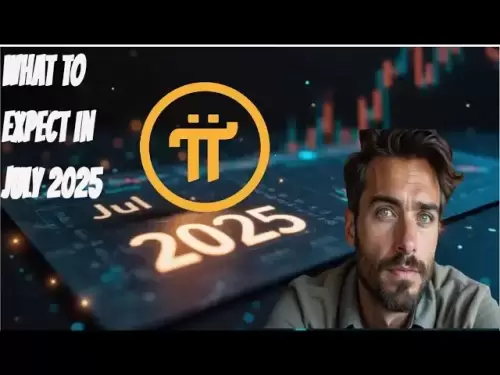-
 Bitcoin
Bitcoin $106,731.2224
-1.05% -
 Ethereum
Ethereum $2,444.9804
-1.20% -
 Tether USDt
Tether USDt $1.0003
0.01% -
 XRP
XRP $2.1882
0.09% -
 BNB
BNB $651.1435
-0.61% -
 Solana
Solana $148.3252
-2.09% -
 USDC
USDC $1.0000
0.01% -
 TRON
TRON $0.2787
0.55% -
 Dogecoin
Dogecoin $0.1598
-3.16% -
 Cardano
Cardano $0.5520
-2.43% -
 Hyperliquid
Hyperliquid $39.0960
-2.64% -
 Bitcoin Cash
Bitcoin Cash $516.9519
2.98% -
 Sui
Sui $2.7011
-2.95% -
 Chainlink
Chainlink $13.0582
-1.71% -
 UNUS SED LEO
UNUS SED LEO $8.9250
-2.53% -
 Stellar
Stellar $0.2359
-0.18% -
 Avalanche
Avalanche $17.3856
-3.73% -
 Toncoin
Toncoin $2.8095
-3.56% -
 Shiba Inu
Shiba Inu $0.0...01121
-1.95% -
 Litecoin
Litecoin $85.2795
-0.85% -
 Hedera
Hedera $0.1471
-2.15% -
 Monero
Monero $319.8004
1.12% -
 Dai
Dai $1.0001
0.01% -
 Ethena USDe
Ethena USDe $1.0001
0.02% -
 Bitget Token
Bitget Token $4.5344
-1.07% -
 Polkadot
Polkadot $3.3224
-2.96% -
 Uniswap
Uniswap $6.9697
-2.75% -
 Aave
Aave $266.1658
-2.25% -
 Pepe
Pepe $0.0...09414
-3.41% -
 Pi
Pi $0.4913
-3.29%
How to do cross-period arbitrage of Coinbase contract? How to hedge contracts with different maturities?
Cross-period arbitrage on Coinbase involves exploiting price differences between futures contracts of varying maturities, requiring deep market understanding and active management.
May 05, 2025 at 06:42 pm
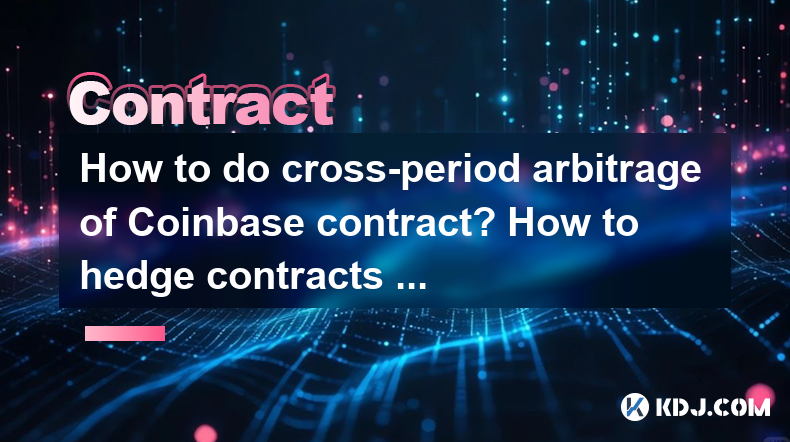
Introduction to Cross-Period Arbitrage on Coinbase
Cross-period arbitrage on Coinbase involves taking advantage of price discrepancies between futures contracts with different expiration dates. This strategy can be lucrative if executed correctly, but it requires a deep understanding of the market dynamics and the specific mechanisms of Coinbase's futures trading platform. In this article, we will explore how to perform cross-period arbitrage on Coinbase and how to hedge contracts with different maturities.
Understanding Coinbase Futures Contracts
Before diving into arbitrage strategies, it's crucial to understand the basics of Coinbase futures contracts. Coinbase offers futures contracts that allow traders to speculate on the future price of cryptocurrencies such as Bitcoin and Ethereum. These contracts have different expiration dates, and the prices of these contracts can vary based on market expectations and other factors.
- Contract Specifications: Each futures contract on Coinbase has a specific size, expiration date, and settlement method. For instance, a Bitcoin futures contract might represent 1 BTC and expire in three months.
- Pricing Dynamics: The price of a futures contract is influenced by the spot price of the underlying asset, interest rates, and the time to expiration. The further out the expiration date, the more speculative the pricing can become.
Identifying Arbitrage Opportunities
To identify arbitrage opportunities, you need to compare the prices of futures contracts with different expiration dates. An arbitrage opportunity exists when the price difference between two contracts is greater than the cost of carrying the position until the expiration of the shorter-term contract.
- Price Discrepancies: Monitor the prices of futures contracts with different maturities. For example, if the price of a one-month Bitcoin futures contract is significantly lower than a three-month contract, there might be an arbitrage opportunity.
- Cost of Carry: Calculate the cost of carrying the position, which includes the interest cost of holding the position and any fees associated with trading on Coinbase.
Executing Cross-Period Arbitrage
Once you have identified an arbitrage opportunity, you can execute the strategy by taking the following steps:
- Buy the Undervalued Contract: Purchase the futures contract that you believe is undervalued. For instance, if the one-month contract is undervalued compared to the three-month contract, buy the one-month contract.
- Sell the Overvalued Contract: Simultaneously, sell the futures contract that you believe is overvalued. In the previous example, you would sell the three-month contract.
- Monitor and Close Positions: Keep an eye on the market and close your positions when the price discrepancy narrows or disappears. This could happen before the expiration of the shorter-term contract.
Hedging Contracts with Different Maturities
Hedging is a strategy used to reduce risk by taking an offsetting position in a related security. When dealing with futures contracts of different maturities, hedging can help protect against adverse price movements.
- Identify the Risk: Determine the risk you want to hedge. For example, if you hold a long position in a three-month Bitcoin futures contract, you might be concerned about a potential price drop before the contract expires.
- Choose the Hedging Instrument: Select a futures contract with a different maturity that can offset the risk. In the previous example, you could short a one-month Bitcoin futures contract to hedge against a price drop.
- Calculate the Hedge Ratio: Determine the appropriate hedge ratio based on the correlation between the two contracts and the amount of risk you want to hedge. This might involve selling a certain number of one-month contracts for each three-month contract you hold.
- Execute the Hedge: Place the hedge by selling the appropriate number of one-month contracts. Monitor the market and adjust the hedge as necessary.
Managing and Adjusting the Hedge
Hedging is not a set-and-forget strategy. You need to actively manage and adjust your hedge to ensure it remains effective.
- Monitor Market Conditions: Keep an eye on market conditions and the performance of your hedge. If the correlation between the two contracts changes, you may need to adjust the hedge ratio.
- Adjust the Hedge: If the market moves in a way that affects your hedge, you may need to buy or sell additional contracts to maintain the desired level of protection.
- Close the Hedge: When the risk you were hedging against has passed or the futures contract you are hedging approaches expiration, you can close the hedge by buying back the contracts you sold.
Frequently Asked Questions
Q: Can cross-period arbitrage be done with any cryptocurrency on Coinbase?
A: Cross-period arbitrage can be performed with any cryptocurrency that has futures contracts available on Coinbase. However, the liquidity and trading volume of the contracts can affect the feasibility of the strategy.
Q: What are the risks associated with cross-period arbitrage on Coinbase?
A: The main risks include market risk, where the price discrepancy may not converge as expected, and execution risk, where you may not be able to buy or sell the contracts at the desired prices. Additionally, there are operational risks associated with trading on Coinbase, such as platform downtime or technical issues.
Q: How often should I adjust my hedge when dealing with contracts of different maturities?
A: The frequency of adjusting your hedge depends on market volatility and the specific contracts you are dealing with. In highly volatile markets, you may need to adjust your hedge more frequently to maintain its effectiveness. It's important to monitor the market closely and adjust as necessary.
Q: Are there any fees associated with executing cross-period arbitrage and hedging strategies on Coinbase?
A: Yes, Coinbase charges trading fees for buying and selling futures contracts. These fees can vary based on your trading volume and the specific contracts you are trading. It's important to factor these fees into your arbitrage and hedging calculations to ensure the strategies remain profitable.
Disclaimer:info@kdj.com
The information provided is not trading advice. kdj.com does not assume any responsibility for any investments made based on the information provided in this article. Cryptocurrencies are highly volatile and it is highly recommended that you invest with caution after thorough research!
If you believe that the content used on this website infringes your copyright, please contact us immediately (info@kdj.com) and we will delete it promptly.
- Deutsche Bank's Bitcoin Custody Play: A New York Minute on Crypto Services
- 2025-07-01 22:30:12
- ZachXBT, Ripple, and RLUSD Adoption: A Deep Dive
- 2025-07-01 22:30:12
- Open XP Redemption on Optimism: Get Ready for OP Tokens on July 15!
- 2025-07-01 22:35:12
- Altcoins in June 2025: Data, Trends, and What's Next for Crypto
- 2025-07-01 21:30:12
- SUI Price Breakout Watch: Will 2025 Forecasts Hit the Mark?
- 2025-07-01 21:30:12
- BTCBULL: Riding Bitcoin's Bull Run to Crypto Glory
- 2025-07-01 20:30:11
Related knowledge
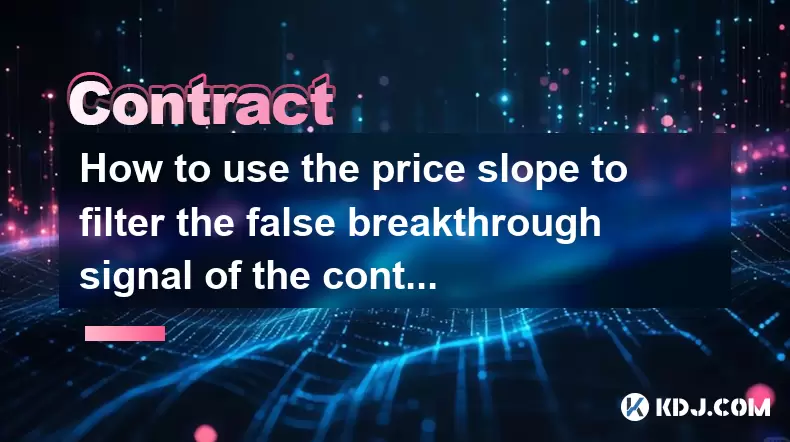
How to use the price slope to filter the false breakthrough signal of the contract?
Jun 20,2025 at 06:56pm
Understanding the Concept of Price Slope in Contract TradingIn contract trading, especially within cryptocurrency derivatives markets, price slope refers to the rate at which the price changes over a specific time period. It helps traders assess the strength and sustainability of a trend. A steep slope may indicate strong momentum, while a shallow slope...
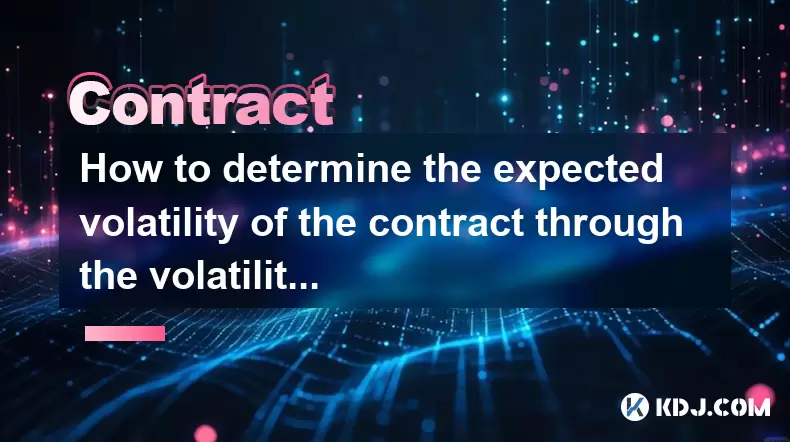
How to determine the expected volatility of the contract through the volatility cone?
Jun 19,2025 at 12:28pm
Understanding the Basics of Volatility in Cryptocurrency ContractsIn the realm of cryptocurrency trading, volatility is a key metric that traders use to assess potential risk and reward. When dealing with futures contracts, understanding how volatile an asset might become over time is crucial for position sizing, risk management, and strategy developmen...
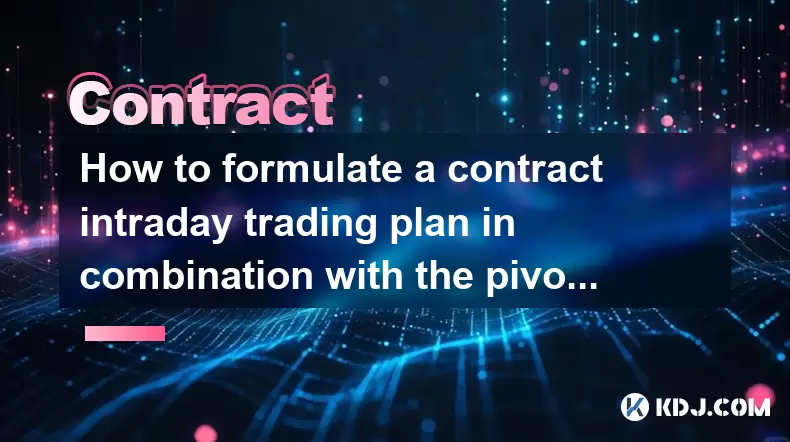
How to formulate a contract intraday trading plan in combination with the pivot point system?
Jun 21,2025 at 03:42pm
Understanding the Basics of Pivot Points in Cryptocurrency TradingPivot points are technical analysis tools used by traders to identify potential support and resistance levels. These levels are calculated using the previous day's high, low, and closing prices. In the context of cryptocurrency trading, where markets operate 24/7, pivot points help trader...
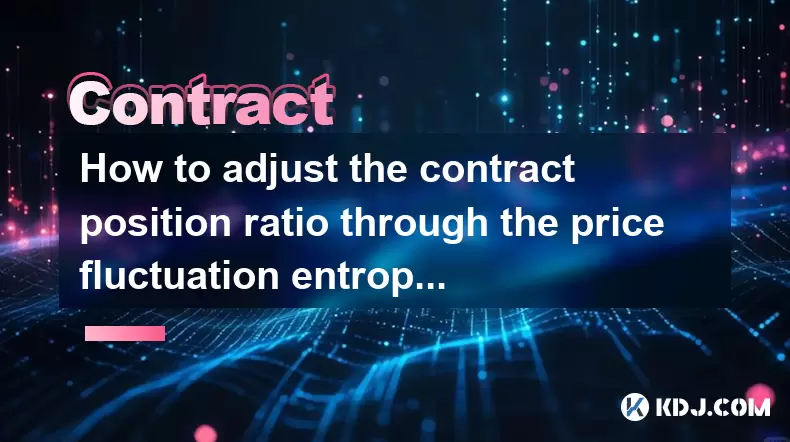
How to adjust the contract position ratio through the price fluctuation entropy?
Jun 22,2025 at 11:42am
Understanding Price Fluctuation Entropy in Cryptocurrency ContractsIn the world of cryptocurrency futures trading, price fluctuation entropy is a relatively new concept used to measure market volatility and uncertainty. It derives from information theory, where entropy refers to the degree of randomness or unpredictability in a system. In crypto contrac...
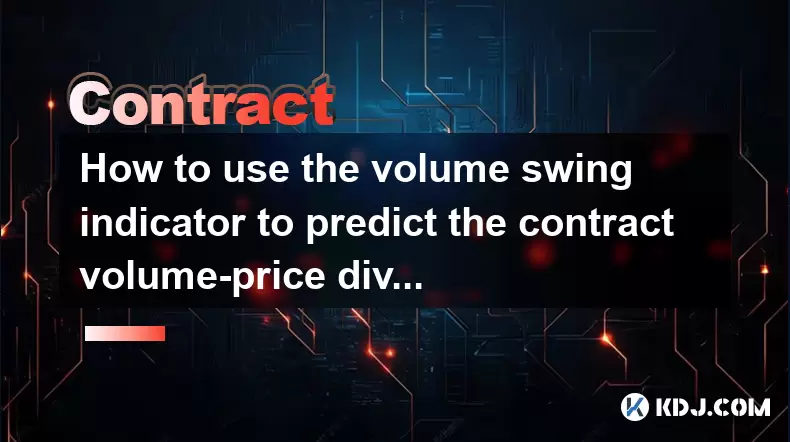
How to use the volume swing indicator to predict the contract volume-price divergence?
Jun 18,2025 at 11:42pm
Understanding the Volume Swing IndicatorThe volume swing indicator is a technical analysis tool used primarily in cryptocurrency trading to evaluate changes in volume over time. Unlike price-based indicators, this metric focuses solely on trading volume, which can provide early signals about potential market reversals or continuations. The key idea behi...
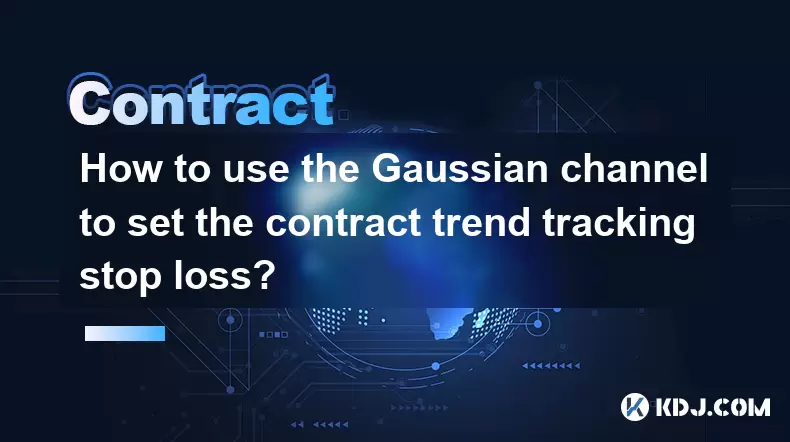
How to use the Gaussian channel to set the contract trend tracking stop loss?
Jun 18,2025 at 09:21pm
Understanding the Gaussian Channel in Cryptocurrency TradingThe Gaussian channel is a technical indicator used primarily in financial markets, including cryptocurrency trading, to identify trends and potential reversal points. It is based on statistical principles derived from the normal distribution, commonly known as the Gaussian distribution or bell ...

How to use the price slope to filter the false breakthrough signal of the contract?
Jun 20,2025 at 06:56pm
Understanding the Concept of Price Slope in Contract TradingIn contract trading, especially within cryptocurrency derivatives markets, price slope refers to the rate at which the price changes over a specific time period. It helps traders assess the strength and sustainability of a trend. A steep slope may indicate strong momentum, while a shallow slope...

How to determine the expected volatility of the contract through the volatility cone?
Jun 19,2025 at 12:28pm
Understanding the Basics of Volatility in Cryptocurrency ContractsIn the realm of cryptocurrency trading, volatility is a key metric that traders use to assess potential risk and reward. When dealing with futures contracts, understanding how volatile an asset might become over time is crucial for position sizing, risk management, and strategy developmen...

How to formulate a contract intraday trading plan in combination with the pivot point system?
Jun 21,2025 at 03:42pm
Understanding the Basics of Pivot Points in Cryptocurrency TradingPivot points are technical analysis tools used by traders to identify potential support and resistance levels. These levels are calculated using the previous day's high, low, and closing prices. In the context of cryptocurrency trading, where markets operate 24/7, pivot points help trader...

How to adjust the contract position ratio through the price fluctuation entropy?
Jun 22,2025 at 11:42am
Understanding Price Fluctuation Entropy in Cryptocurrency ContractsIn the world of cryptocurrency futures trading, price fluctuation entropy is a relatively new concept used to measure market volatility and uncertainty. It derives from information theory, where entropy refers to the degree of randomness or unpredictability in a system. In crypto contrac...

How to use the volume swing indicator to predict the contract volume-price divergence?
Jun 18,2025 at 11:42pm
Understanding the Volume Swing IndicatorThe volume swing indicator is a technical analysis tool used primarily in cryptocurrency trading to evaluate changes in volume over time. Unlike price-based indicators, this metric focuses solely on trading volume, which can provide early signals about potential market reversals or continuations. The key idea behi...

How to use the Gaussian channel to set the contract trend tracking stop loss?
Jun 18,2025 at 09:21pm
Understanding the Gaussian Channel in Cryptocurrency TradingThe Gaussian channel is a technical indicator used primarily in financial markets, including cryptocurrency trading, to identify trends and potential reversal points. It is based on statistical principles derived from the normal distribution, commonly known as the Gaussian distribution or bell ...
See all articles





















